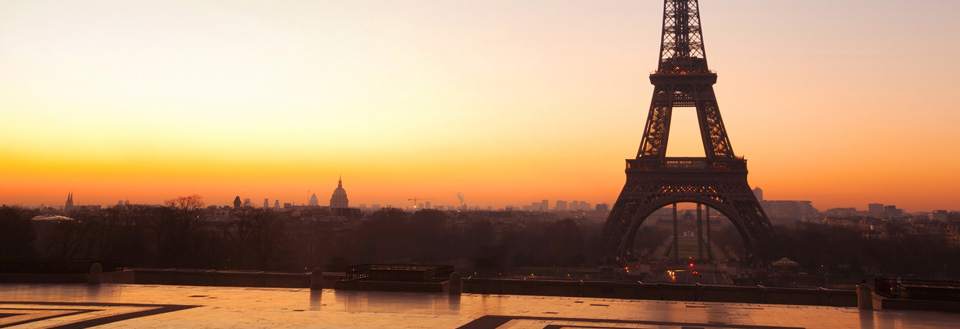
If you succeed in climbing the hill of the castle, you will reach one of Slovenia's most beautiful castles, originally from the 9th century. There is a fantastic view over Ljubljana from the tower of the castle and the city becomes even more beautiful if you visit the castle at sunset where the fog showers the city in beautiful lights of red and gold.
The Italian inspired square of Ljubljana is named after the great Slovenian poet France Preseren (1800-1849), who, among others, wrote the lyrics for the Slovenian national song. The architect Maks Fabiani and the sculptor Ivan Zajc made the sculpture in the middle of the square. It was inaugurated in 1905.
The dragon bridge was built in the end of the 19th century and was finished in 1901, replacing the old wooden bridge. The bridge is an iron-concrete-construction and was one of the firsts of its kind in Europe. It was decorated by one of Otto Wagner's students, Jurij Zaninovich.
The Cathedral of Ljubljana, which has been dedicated to St. Nicolaus, was built in the beginning of the 18th century at a place where there had earlier been a church from the 13th century. The two-towered cathedral got its dome in 1844. Since then, it has been decorated even further, among others on the main door, which is made in bronze.
Once upon a time, the city only had a large fire to guide the ships safely into harbour. Today, Piran is a beautiful, historical holiday city, where past and present make out a wonderful mix.
The old castle from the 15th century is situated in the middle of Maribor. The castle hosts a regional museum with an archaeological and an ethnographic exhibition as well as a large banqueting hall, a baroque chapel and a beautiful rococo staircase.
If you got plenty of time, the city park in Maribor is a very relaxing and beautiful place to explore. You can see all the wine fields crawling up the mountain slopes and enjoy the small aquarium and terrarium, which belong to the park.
The museum is situated at the renaissance castle in the outskirts of Ljubljana. It contains a permanent exhibition of the works of the famous architect Joze Plecniks. He is the originator of many of the buildings in Ljubljana and an everlasting source of inspiration for new architects.
Today, the Bishop's Palace in Ljubljana is the seat of the Catholic archbishop in Slovenia. The Palace was built in 1522 and extended in the middle of the 17th century. The building got its present appearance with a beautiful arcade court in baroque style in the end of the 18th century.
The five kilometres long Bohinj Lake is situated about 25 kilometres from Bled. It is the largest lake in Slovenia. This beautiful lake gets its water from a 60 metres tall waterfall at the end of the Sava River.
The landmark of the city, the baroque Maria Pillar, is situated on the beautiful renaissance square, Glavni. The pillar was drawn by Jozef Straub and erected in 1743 in memory of the plague.
The old middle age town in Koper was once the capital of the Istra area. The historical city centre gives a special character to this Mediterranean city.
Ljubljana's opera was built in 1882 in new-renaissance style and drawn by the Czech architects Hrasky and Hruby. The building was used for both German and Slovenian performances until the Germans got their own theatre in 1911.
The caves are some of the largest and most accessible in the world. The corridors of the caves stretch for over 20 kilometres, in two horizontal layers. The caves were visited for the first time in 1819 and since then, millions of tourists have visited The Postojna Caves.
Skofja Loka, situated 24 kilometres Northwest of Ljubljana, is one of the most well preserved renaissance cities in Slovenia. It is known that the city was a provincial town back in 1248, and that it was partly destroyed during an earthquake in 1511. Today, the city is an official monument of culture.
The large underground Skocjan Caves are situated under the deserted Karst Region 250 metres down. They stretch over five kilometres. Millions of years ago, a deep sea area left large quantities of lime stone, which today gives form to the fascinating stalactites and stalagmites.
The church from 1669 is without doubt the most beautiful baroque building in Ljubljana. It was built in the place of a church that had burned down. Inside the church there is a large altar of Francesco Robba, and in front of the church is The Holy Trinity from 1693, which was originally made of wood, but was later replaced by a stone sculpture.
Kranjska Gora is the name of a little village situated by the end of Slovenia's largest ski resort. The city has, among others, hosted the world championships in alpine skiing and ski jumping.
Only 15 minutes' walk from Ljubljana city centre, on the southern side of the Roznik hill, is the Zoo. Visitors can admire several wild animals from all over the world living in their natural habitat.
This enormous park has an area of 84,805 hectare and also a large number of different animal and plant species. You will, among others, find the beautiful valley with the seven lakes, which are a perfect starting point for daylong hikes towards the summit.
This modern tourist target is a well-known destination all over Europe. The nice sandy beaches, the hydro hotels, the hectic nightlife and the good sport facilities attract large numbers of tourists each year.